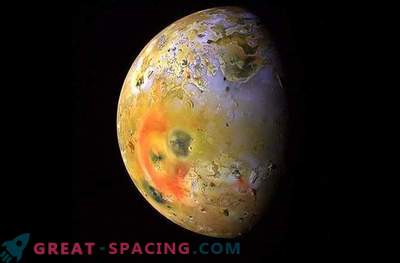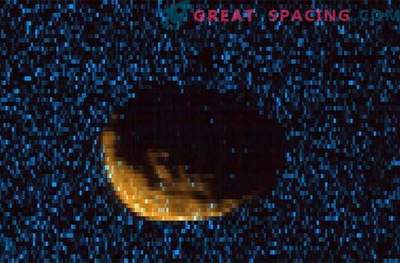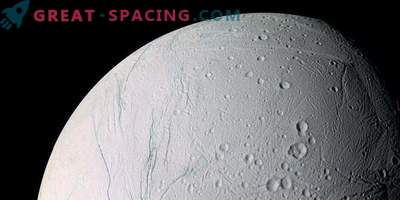
Unusual arc-shaped red stripes cross the ice-covered Saturnian moon of Tefia, painting a lifeless space landscape. These narrow curved lines on the surface of the moon are several miles wide (or kilometers, if you will) and several hundred miles (or kilometers again) in length.
The mission of the Cassini spacecraft in the orbit of Saturn has been going on for more than 10 years. Many believed that they had already seen all the curiosities associated with the gas giant surrounded by rings and its fancy moons system. But the new data that the probe transmitted re-stirred the public interest. This time, the ice-covered moon, Tethys, showed her mysterious streaks.
During the passage in April, Cassini took photographs of this icy moon with a diameter of 660 miles (1060 km) using transparent, green, infrared and ultraviolet filters. And, having processed the pictures, the scientists discovered another riddle - long red stripes, or arcs, stretching across the entire surface of the planet.
It must be said that the red spots were already found in the pictures of the moon earlier, during the previous span. However, at that time the angle between the satellite system, the Sun and the probe was far from ideal. Therefore, when summer began in the northern hemisphere of Saturn (over the last few terrestrial years), the stripes located in the northern hemisphere of the Tethys were also visible and caught the lens of Cassini cameras. At first glance, these strange bands are quite young on the geological scale of education. One scientist working on the Cassini project, Paul Schenk from the Moon and Planets Institute in Houston, Texas, told NASA in a new press release: "The red arcs really hit us. It's amazing how bright and expressive they are."
Specialist in image processing from the Cassini group, Paul Helfenstein (Paul Helfenstein) from Cornell University, Ithaca, New York, adds: “The red stripes must be a geologically young formation, as they often overlap with old, like crater craters. However, we cannot name their age in years. But if the stripes are a thin layer, a kind of "veneer" formed on icy soil, then in the conditions of the space environment it should disappear from the surface of Tethys quickly enough. "
Red stripes were also found on the surface of another object - the satellite of Jupiter of Europe. It is assumed that under the icy surface of Europe lies a real ocean of water. It is believed that the strips on Europe are colored with aqueous solutions of salts mixed with substances such as magnesium sulfate or sulfuric acid. These chemical reactions are believed to be caused by a complex interaction between the liquid underground ocean and the likely tectonic shifts of Europe’s ice crust. This led to hypotheses about the possibility of the circulation of nutrients from the ice surface to the ocean below. That, quite possibly, supports the extraterrestrial biosphere of this moon. At such an early stage of research, it is difficult to say whether the red arcs are related to cracks on the surface of the moon, and what chemical processes caused them to appear. But the scientists who lead the Cassini mission hope that the next flight of the vehicle will give them a chance to consider the strange education in more detail.
“We're going to take a closer look at one of the red arcs on Tethys in November. And try to determine the source and composition of these unusual formations, ”- said Linda Spiker, (Linda Spilker), employee of the Jet Propulsion Laboratory (NASA) in Pasadena, California.











































